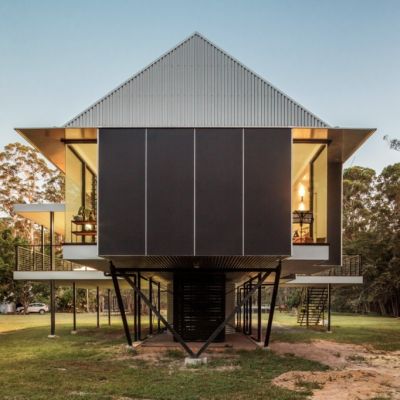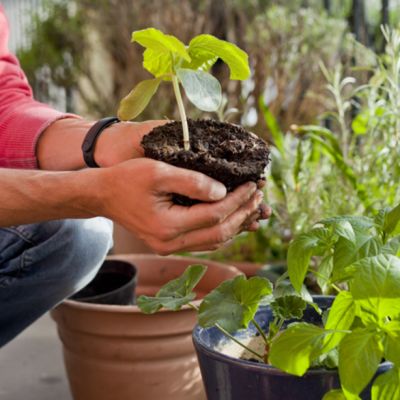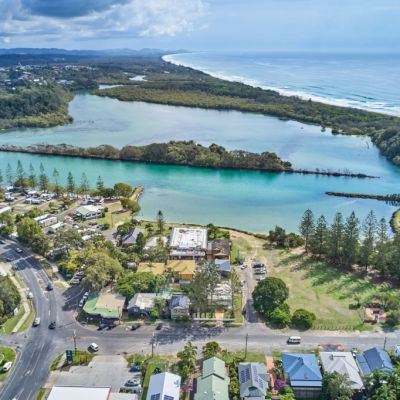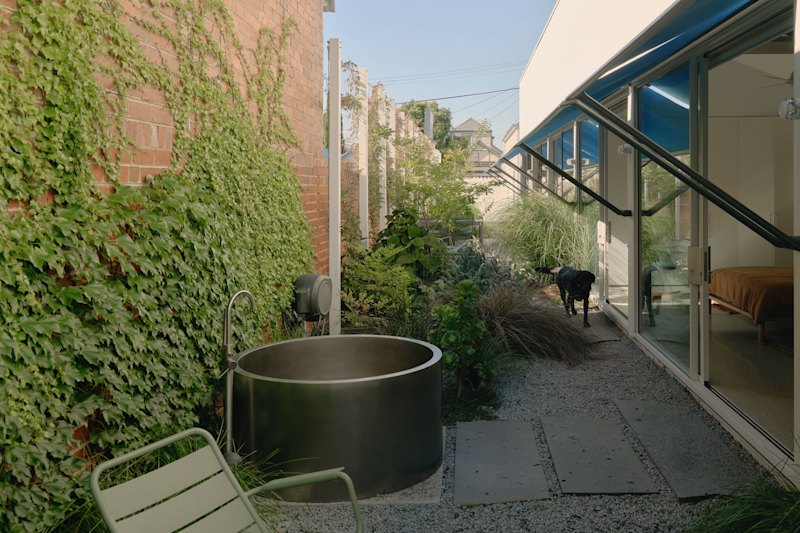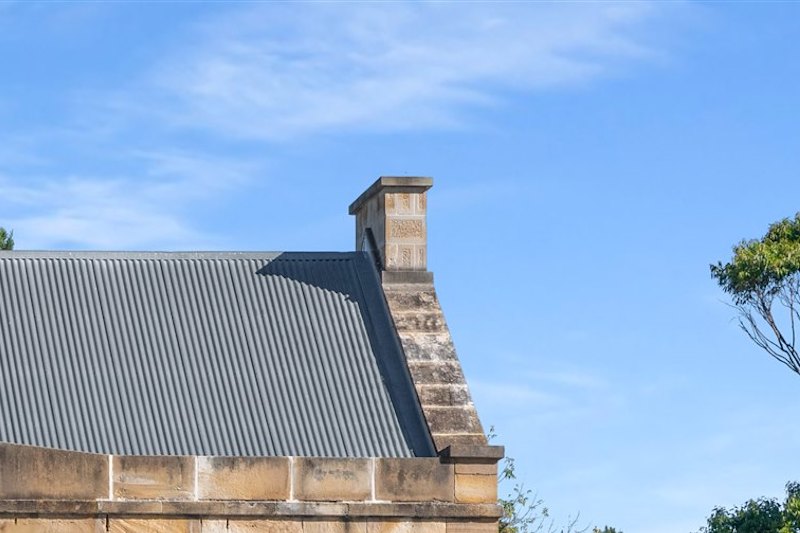'Communal babysitting, home-made meals and bees': What it's really like to live in an ecovillage
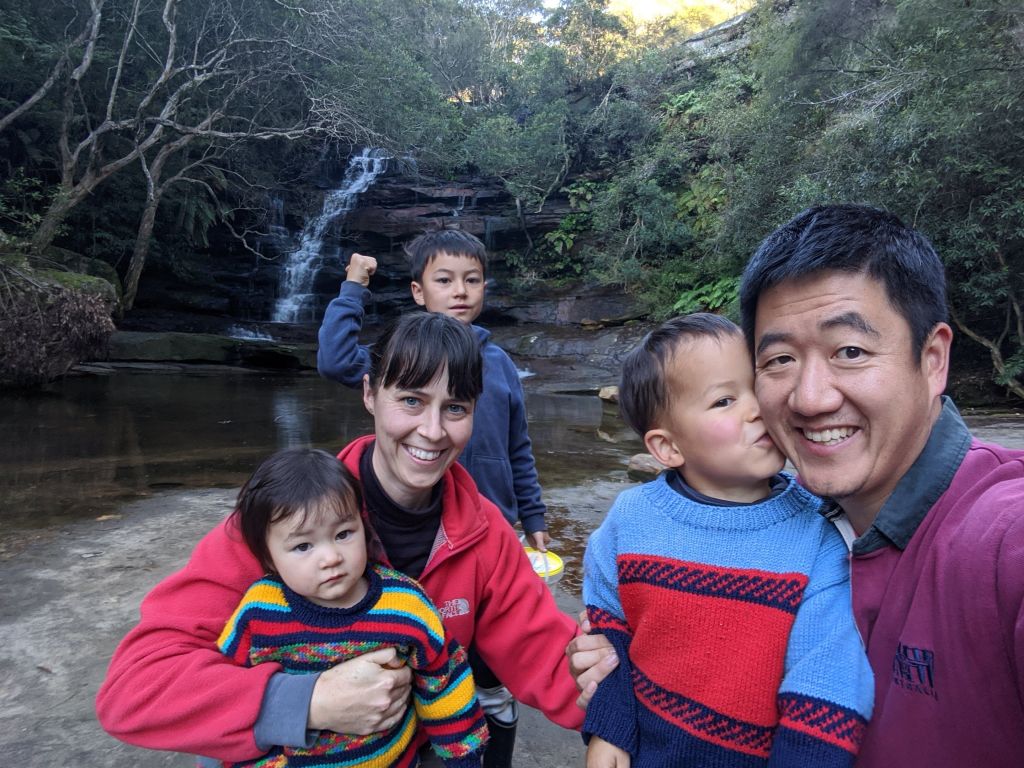
After 34-year-old high school teacher Vanessa Huang had children she felt lonely in Sydney’s West Ryde. Exacerbating this, her husband John, an IT professional, had to work longer hours so she could look after the kids. The couple found a solution: moving to Narara Ecovillage on the Central Coast north of Sydney.
Ecovillages are a subset of intentional housing defined as twenty or more people living together lightly on the earth, explains Andrew McLean, co-founder of the non-profit organisation, Eco Villages Australia. Interest in them is booming. McLean reveals inquiries to Eco Villages Australia have doubled over covid. And, at Narara the waiting list for stage two land is filling fast.
Huang (who now has three children and another on the way) first learnt about Narara from a girlfriend and came up for an open day. “Straight away I knew it would be better for me,” she says.
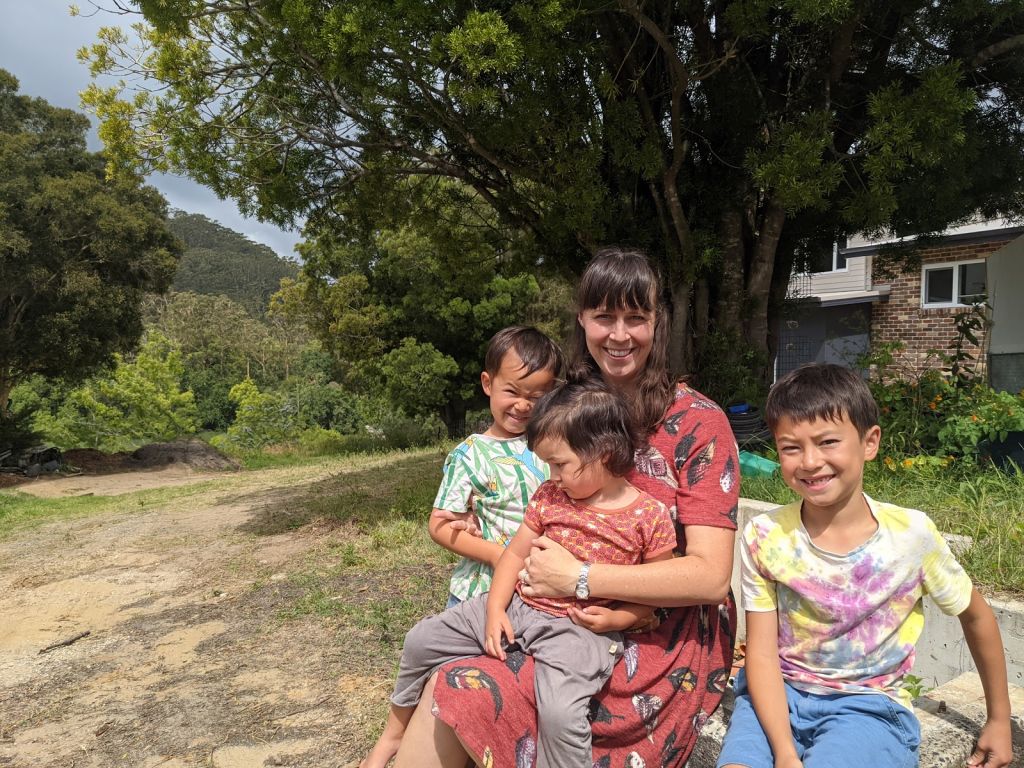
In 2017, the couple bought a small block of land in the village for about $280,000 and built a natural straw, timber and cob home.
“For us, it’s been fantastic,” she says. “I only have to walk 20 metres to find someone to connect to. Our kids are really connected to other neighbouring kids and other adults.”
The family enjoys dinners with the community twice a week and a free holiday program for kids. A monthly levy covers shared facilities, including a machinery shed, food gardens, chooks, bees, op shop, dam and kids treehouse. Other perks include a bulk-food buying service and unofficial “shag roster” for couples with kids.
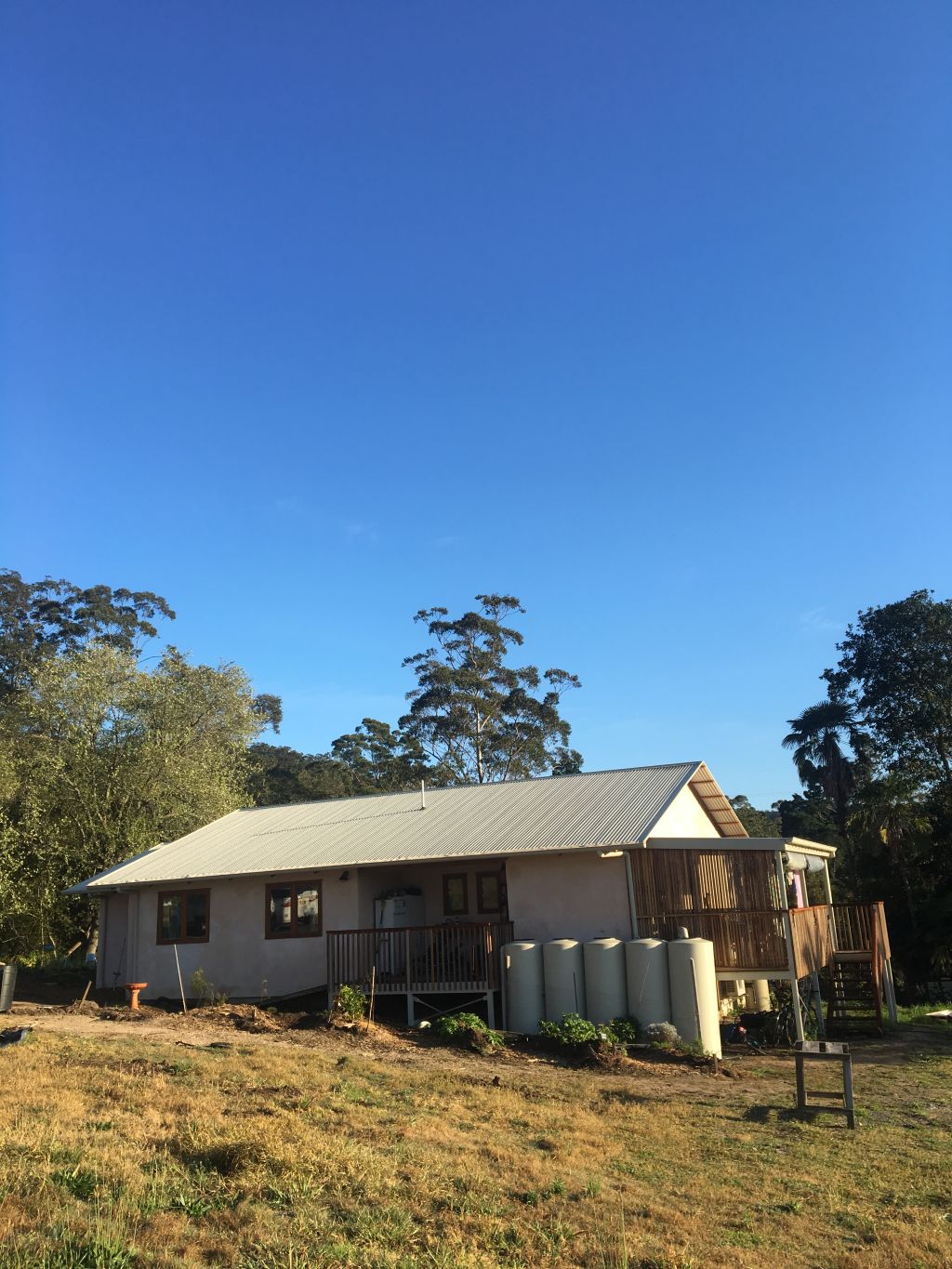
The lower-cost lifestyle has meant John only has to commute to the city two days a week. Huang estimates they save $16,000 a year by living at Narara. “There are so many trading and bartering opportunities here,” she says. Recently, John had an accident on his electric skateboard and was cared for by volunteer nurses in the village. He gives back by assisting with IT.
But, a more socially connected life isn’t utopia. With all decisions made collectively it can be frustrating listening to everyone’s opinion, Huang admits. And, it’s not uncommon for kids to come knocking on the door for play dates at 7am.
Dani Austin, 34, and partner Sam Ryan were attracted to Aldinga Arts Ecovillage by the kindness displayed by residents when they attended a tiny homes workshop there.
In 2015 they bought a block and built a straw-bale home in 2017.
“We grow almost all our own veggies and have chickens,” Dani says. “We’re in a goat collective, too.” The couple, who work part-time in Adelaide, also run a micro-business, Folk Of All Trades, providing sustainable, simple-living workshops.
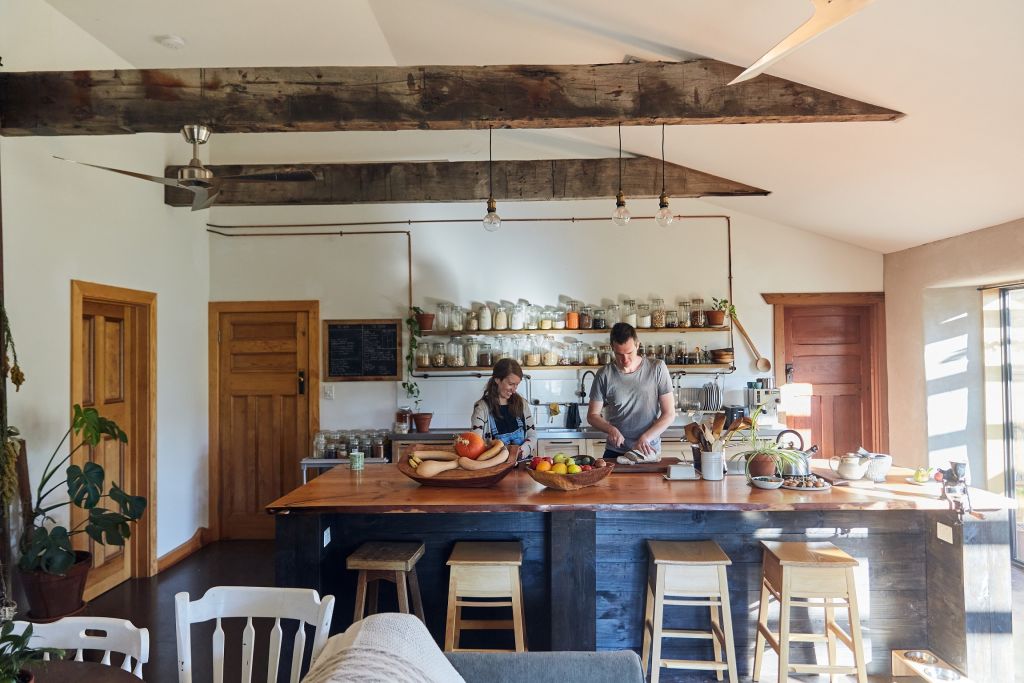
“We love learning from the diversity of people here,” Austin says. “The biggest challenge for us personally is remembering to collaborate and compromise. Living in a community is not something you’re taught at school (school is generally about individual achievement and progress).
Shedding the image of pot-smoking hippies, today’s ecovillages represent a growing global response to the problems of modern living, McLean says. “Covid has highlighted some real weaknesses in our society – globalised manufacturing, social disconnection and an economy based on overconsumption.”
Ecovillages vary wildly. “Some are rural, some urban,” McLean says. “Some people own their own lots and some use a collective stewardship model. Some are socially close, some more distant.”
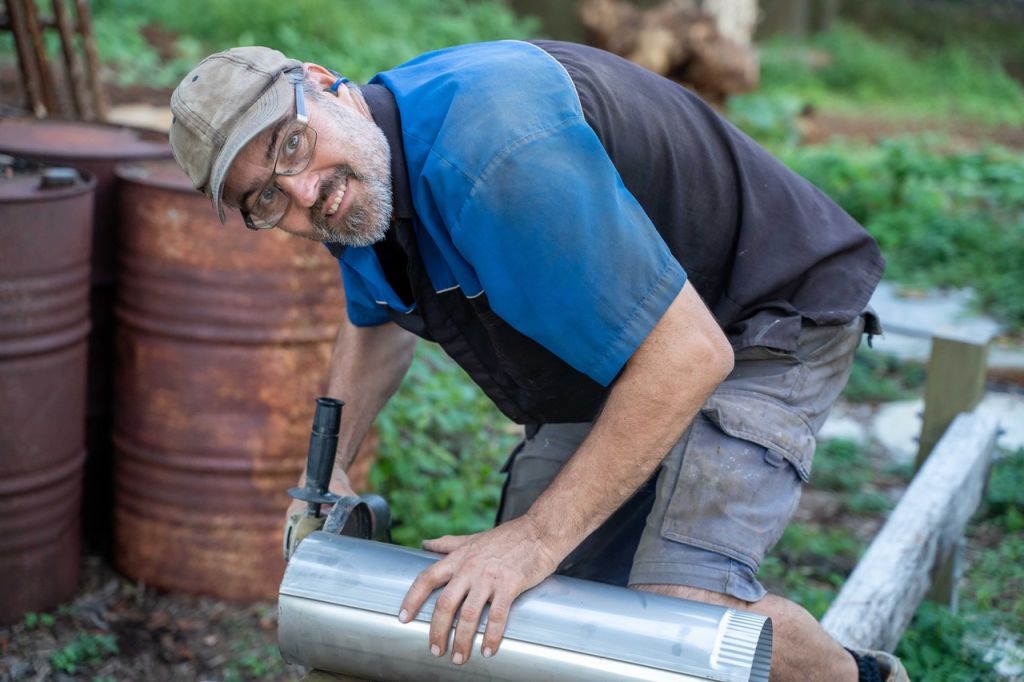
McLean estimates there are 6000 ecovillages across the world. The number within Australia is unknown, given many remain hidden. Clusters exist in south-wast Queensland and northern NSW. Buildings range from basic to the high-end properties of award-winning The Ecovillage at Currumbin (Queensland) where residents enjoy communal Bali huts, a gym, cafe and pool.
Along with buying land or an established home, another option is renting. McLean, for instance, shares a three-bedroom workers cottage at Maleny Ecovillage, which he established 18 months ago. The land, owned by Eco Villages Australia, is held in a community land trust. Some residents choose to lend to the non-profit to buy land and improve the property, all residents then pay rent which pays off these loans.
Tips for finding the right place
Cashing in on the trend, some developers are calling their developments ecovillages, McLean warns. “They need to be self-managed or it isn’t one.”
A good place to start is the Global Ecovillage Network.
Some impose high demands and rules on members, most allow more freedom of choice. The key is to match the type of people to yourself.
Attend an open day to get a feel for the place. Commonly, the only requirement to enter is the cash to buy in, but for others, it’s more about admittance to the club. “It’s a bit like marriage – go in with eyes wide open, but once you get into it, with eyes half-shut,” McLean advises. Also, make sure it’s easy to leave.
“It’s not easy working together,” he says. “But in a world facing ecological destruction, it’s the number one thing we need to grapple with.”
We recommend
We thought you might like
States
Capital Cities
Capital Cities - Rentals
Popular Areas
Allhomes
More
